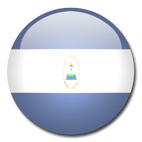International Headteacher
Menu
Full name: Republic of Nicaragua
Population: 5.8 million (UN, 2011)
Capital: Managua
Area: 120,254 sq km (46,430 sq miles)
Major languages: Spanish, English, indigenous languages
Major religion: Christianity
Life expectancy: 71 years (men), 77 years (women) (UN)
Monetary unit: 1 gold cordoba = 100 centavos
Main exports: Coffee, meat, shellfish, sugar, tobacco, cattle, gold
GNI per capita: US $1,110 (World Bank, 2010
Internet domain: .ni
International dialling code: +505
Population: 5.8 million (UN, 2011)
Capital: Managua
Area: 120,254 sq km (46,430 sq miles)
Major languages: Spanish, English, indigenous languages
Major religion: Christianity
Life expectancy: 71 years (men), 77 years (women) (UN)
Monetary unit: 1 gold cordoba = 100 centavos
Main exports: Coffee, meat, shellfish, sugar, tobacco, cattle, gold
GNI per capita: US $1,110 (World Bank, 2010
Internet domain: .ni
International dialling code: +505
|
Never rich in the first place, Nicaragua is striving to overcome the after effects of dictatorship, civil war and natural calamities, which have made it one of the poorest countries in the Western Hemisphere.
Nicaragua has traditionally relied on agricultural exports to sustain its economy. But these benefited mainly a few elite families of Spanish descent, primarily the Somoza family, which ruled the country with US backing between 1937 and the Sandinista revolution in 1979. Overview The Sandinistas began redistributing property and made huge progress in the spheres of health and education. They won a decisive victory in 1984 elections, but their leftist orientation also attracted US hostility and drove them to turn to the USSR and Cuba. This set the scene for a US-sponsored counter-revolution, which saw Washington arm and finance thousands of rebels, or Contras, in order to carry out attacks on Nicaragua from bases in Honduras. The US also imposed trade sanctions and mined Nicaraguan harbours. By 1990, when the Sandinistas were defeated in elections held as part of a peace agreement, Nicaragua's per capita income had plummeted and its infrastructure was in tatters. Peace brought some economic growth, lower inflation and lower unemployment. But this was more than counter-balanced by the devastations of Hurricane Mitch in 1998, which killed thousands, rendered 20% of the population homeless and caused billions of dollars worth of damage. Nicaragua's modest tourist industry - which had all but collapsed by the early 1990s - has enjoyed a revival. The country's attractions include wildlife-rich rainforests, volcanos, beaches and colonial-era architecture. |
information provided by www.bbcnews.co.uk

